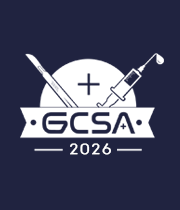Title : Understanding of foley catheter care and implications amongst patients at Multi Institute private practice
Abstract:
Background: The Foley catheter remains one of the most commonly used devices in urological and surgical practice. Despite its widespread use, patient understanding of catheter purpose, care, and complications is often suboptimal, leading to preventable morbidity. In private practice settings, where patient education is variably standardized, this knowledge gap may be wider.
Aim: To evaluate the awareness, perceptions, and practical understanding of Foley catheter use and care amongst patients across multiple private institutes, and to identify key areas requiring targeted educational intervention.
Methods: A prospective, questionnaire-based survey was conducted across five multi-specialty private centers over a six-month period (January–June 2025). Adult patients (n=312) discharged with indwelling Foley catheters were included. A validated 20-item questionnaire assessed knowledge of catheter purpose, hygiene practices, recognition of complications, and source of prior information. Data were analyzed using descriptive statistics and chi-square tests for subgroup comparisons.
Results:
- Only 42% of patients correctly identified the medical indication for their catheter.
- 61% reported inadequate instruction regarding catheter hygiene at discharge.
- Awareness of complications was low: only 28% could identify urinary tract infection as a risk, and a mere 12% recognized catheter-related bladder discomfort as abnormal.
- Patients who received structured counselling by a urology nurse had significantly higher knowledge scores (p<0.01).
- The majority (74%) expressed willingness to receive educational leaflets or digital video modules for home care.
Conclusion: Patient understanding of Foley catheter care remains poor in private practice settings, with significant gaps in awareness of indications, hygiene, and complications. Structured pre-discharge counselling and standardized educational tools can substantially improve outcomes. Future strategies should focus on multimodal patient education, integrating both verbal counselling and accessible take-home resources.



